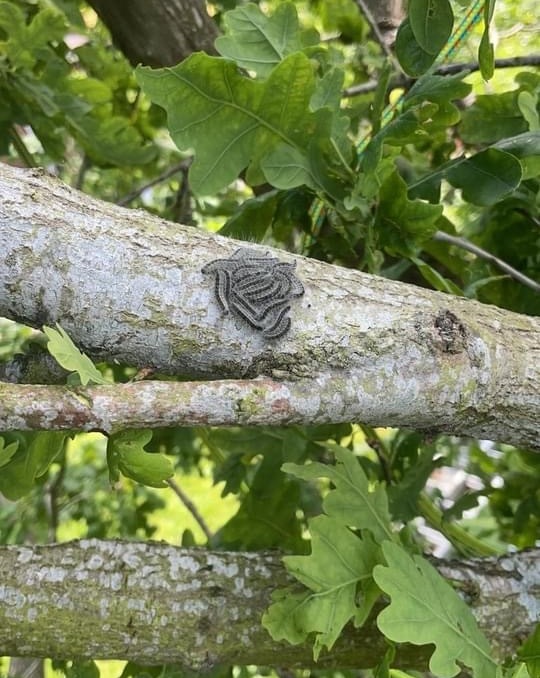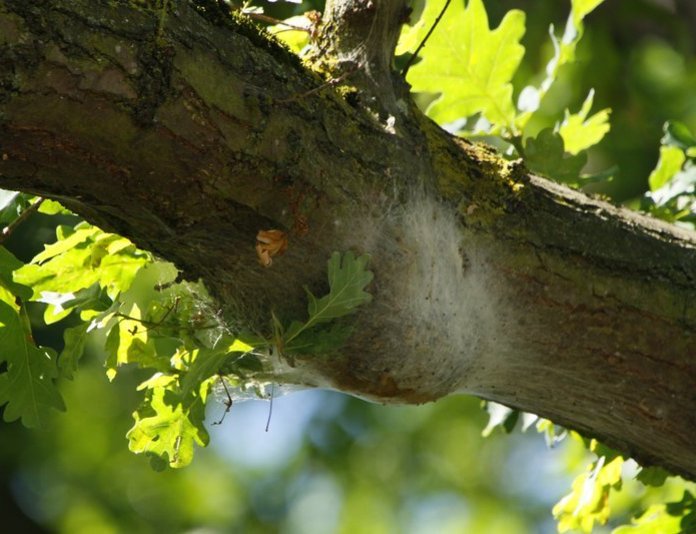OAK PROCESSIONARY MOTH
WHAT IS OAK PROCESSIONARY MOTH?
Oak Processionary Moth, or OPM for short, is a pest of Oak trees that was accidentally introduced into the England in 2005 from Europe. They live and feed almost exclusively on Oak trees. The caterpillar move around the tree in a nose-to-tail processions, which is where they get their name.
They have tiny hairs which have a protein called Thaumetopoein, which is extremely irritating if you come into contact with them. The problem affects animals and people usually causing skin and eye irritation & breathing difficulties.


I'VE SPOTTED OAK PROCESSIONARY MOTH - WHAT SHOULD I DO?
If you think you’ve discovered OPM on a tree within your boundary, stay clear of it, report it via the Forestry Commission website (https://www.forestresearch.gov.uk/tools-and-resources/pest-and-disease-resources/oak-processionary-moth-thaumetopoea-processionea/) and contact us for a quote to remove the nests.
If the nest is a council owned tree, or a neighbours, then we would recommend notifying them as soon as possible. The nests can be difficult to spot in the tree; they appear early summer around June time, they are formed using a grey/white coloured silk and tend to be found on the trunk or branches, more commonly on the underneath of the branch to stay sheltered. The shape and size can vary, however, most common shapes are spherical, hammock-like, teardrop shaped or a blanket stretched out. They can be found as low as ground level all the way to the top of the tree
The most effective time to remove the caterpillars are when they have settled into their nests and are not likely to be out roaming in the foliage - between June & July. We suggest the area is taped off and signs put up to make people aware to keep their distance.
We work towards the forestry commissions guidelines when removing nests and we do so by hand - very covered up hands!! We wear complete body protection, as it's extremely important to have every inch of skin covered to avoid coming into contact with the hairs. We do not use pesticides to avoid harming any other wildlife around. We will double bag the nest and tape them shut. These nests are considered hazarous waste so they will be disposed of in a hazardous waste bin then collected by a hazardous waste diposal specialist.

REPORTED SIGHTINGS OF OPM 2019-2021










